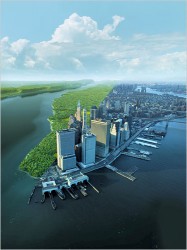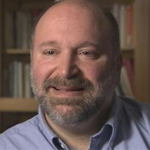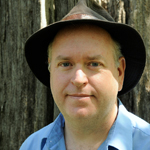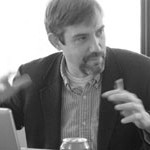PROGRAM
The next administration will face great challenges in addressing continued global climate change and its effects. In his book Terra Nova, The New World after Oil, Cars and Suburbs (published in 2013 by Abrams) Eric Sanderson, author of the best-selling book Manahatta: A Natural History of New York, argues that America’s addiction to oil and the lack of a policy of energy independence is actually destroying our way of life. Sanderson writes, “The oil-cars-suburbs complex is so well-constructed, so resilient to reproof, so tightly bound up with our economy and way of life, that we do not even notice much of what is right and good in our lives we give up to curse through the traffic on the way to work.” Sanderson’s solution focuses on four inter-linked and phased-in policy initiatives toward rethinking our energy consumption and the environmental toll of our car-dependent lifestyles. William Solecki, Director of The CUNY Institute for Sustainable Cities, moderated a conversation on the future of our energy and environmental policy with Sanderson and Owen Gutfreund, Associate Professor of Urban Affairs and Planning at Hunter and author of Twentieth Century Sprawl: Highways and the Reshaping of the American Landscape (Oxford University Press).
SPEAKERS
Owen Gutfreund Associate Professor of Urban Affairs and Planning, Hunter College
Owen Gutfreund, Associate Professor of Urban Affairs and Planning, is the author of Twentieth Century Sprawl: Highways and the Reshaping of the American Landscape (Oxford University Press, 2004), and was one of the authors of Robert Moses and the Modern City (W.W. Norton, 2007). His areas of specialization include transportation policy, suburbanization, sustainable development, public finance, and comparative urbanization (with an emphasis on cities in developing countries, as well as Canada and Australia). He was an Associate Editor of the Encyclopedia of New York City, and is on the editorial board of the Journal of Urban History. Owen is currently working on Cities Take Flight, a book about the impact of airports and air travel on American cities and towns.
For many years, he was the Director of the Barnard-Columbia Urban Studies Program. He is on the on the board of the Skyscraper Museum, was chair of the Columbia University Seminar on the City, and of the New York Council for the Humanities. Before earning his doctorate in history at Columbia, Owen was a Vice President at Lazard Freres & Co., where he worked in public finance, assisting states, cities, and government agencies in raising capital for a wide range of purposes.
Eric Sanderson Senior Conservation Ecologist at the Wildlife Conservation Society, Director of The Mannahatta Project
Sanderson received his Ph.D. in ecology (emphasis in ecosystem and landscape ecology) from the University of California, Davis, in 1998, while studying with Dr. Susan Ustin. Starting at WCS in 1998, he established the “Landscape Ecology and Geographic Analysis” program to bring landscape thinking and geographic analysis tools into the conservation practices of the WCS. In 2002 Dr. Sanderson and colleagues created the Human Footprint map, the first look at human influence globally at less than 1 square mile resolution. He is also an expert on species conservation planning and has contributed to efforts to save lions, tigers, Asian bears, jaguars, tapirs, peccaries, American crocodiles, North American bison and Mongolian gazelle; and landscape planning conservation efforts in Argentina, Tanzania, Mongolia, and the Greater Yellowstone Ecosystem and the Adirondack Park, in the USA. He has edited two scientific volumes and written numerous scientific papers. His work has been featured in the New York Times, National Geographic Magazine, CNN, NPR, and The New Yorker. He is also the director of The Mannahatta Project, an effort to reconstruct the original ecology of Manhattan Island at the time of European discovery in the early seventeenth century. In 2009 he published a book, “Mannahatta: A Natural History of New York City,” illustrated by Markley Boyer. From May 20 – October 12, 2009, Dr. Sanderson curated an exhibition based on the Mannahatta Project on display at the Museum of the City of New York.
William Solecki Director, CUNY Institute for Sustainable Cities (CISC), and professor in the Department of Geography, Hunter College
Prof. Solecki’s research focuses on urban environmental change, and urban spatial development. He is the Director of the CUNY Institute for Sustainable Cities and has served on several U.S. National Research Councils committees including the Special Committee on Problems in the Environment (SCOPE). He currently is a member of the International Geographical Union (IGU) Megacity Study Group and the International Human Dimensions Programme (IHDP), Urbanization and Global Environmental Change Scientific Steering Committee. He also serves as the co-leader of several climate impacts in the greater New York and New Jersey region.
Prof. Solecki’s teaching interests include courses on urban environmental change, urban spatial development, and research methods. In the past couple of years, he has worked at developing course material on climate change and cities. Since he started teaching, he also has taught classes in environmental policy and management, world geography/human geography, GIS, and resource conservation.
RESOURCES
- Eric Sanderson – TED Talk on the Mannahatta Project
“400 years after Hudson found New York harbor, Eric Sanderson shares how he made a 3D map of Mannahatta’s fascinating pre-city ecology of hills, rivers, wildlife — accurate down to the block — when Times Square was a wetland and you couldn’t get delivery.”
- Welikia / Mannahatta Project
Ever wondered what New York looked like before it was a city? Welcome to Welikia , 1609.
After a decade of research (1999 – 2009), the Mannahatta Project at the Wildlife Conservation Society un-covered the original ecology of Manhattan, one of New York City’s five boroughs. The Welikia Project (2010 – 2013) goes beyond Mannahatta to encompass the entire city, discover its original ecology and compare it what we have today. Welikia (pronounced “WAY-lee-ki-a” ) means “my good home” in Lenape, the Native American language of the New York City region at the time of first contact with Europeans. The Welikia Project embraces the Bronx, Queens, Brooklyn, Staten Island and the waters in-between, while still serving up all we have learned about Mannahatta. Welikia provides the basis for all the people of New York to appreciate, conserve and re-invigorate the natural heritage of their city not matter which borough they live in.
- CUNY Institute for Sustainable Cities
The CUNY Institute for Sustainable Cities (CISC) works to realize cities as part of the solution to global sustainability challenges. By merging the science of sustainability with innovative public programming, we examine opportunities available to cities—and their residents—for proactive responses to on-going environmental change. We harness the potential of formal and informal means to inspire a new generation of environmental thinkers. In doing so, we seek to understand and influence the evolution of the urban environment, while connecting the CUNY community, decision makers and the general public to these critical issues.
- Rising Sea Levels Are Serious, New York Times Op-Ed by Bill Solecki and NASA Godard's Cynthia Rosenzweig
“Since 2001, when “Climate Change and a Global City” was published, climate scientists have been highlighting the vulnerability of the New York metropolitan region to coastal flooding in light of rising seas. Over the past 100 years, data from the tide gauge at the Battery in Lower Manhattan reveal that the region has already experienced close to a foot (9 to 10 inches) of sea level rise.”
- NYTimes Review of "Mannahatta"
Review by Robert Sullivan from May 29, 2009. The Times calls Sanderson’s book, “A wondrously artful natural history of Manhattan that envisions the island as it was when Henry Hudson first sailed up 400 years ago.”




























